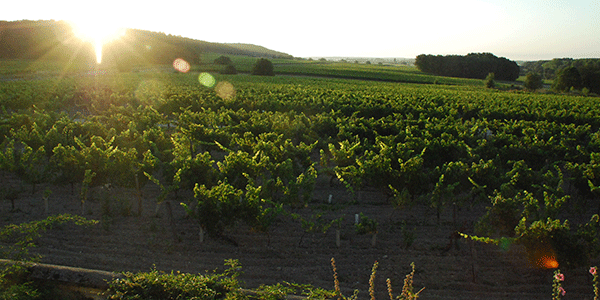Foolproofing Pink Wine

How to make pink wine fool proof?
(Hint: the answer is Clarete)
Dear Dry Pink Lovers,
There’s a perception problem in the world of dry pink wines (for me one of the most important wine categories), and right now you are not being offered the range of pink you should be seeing. Many of our sommeliers, particularly in Sydney, report that they are unable to sell any rosé/rosado but for pale Provençals … all too often one sees half a dozen more or less identical (and largely ordinary) ones constituting the entirety of our wine lists and takeaway fridges. Given how interesting and varied the dry pink wine world is, this is a real shame. Simply, many of the finest dry pinks are being ignored right now, including the great diversity in varietal flavour, texture and style which TSA offers out of Iberia. The job of rosé/rosado is to rinse one’s mouth, and different foods required different weights, textures and flavours to get the job done right.
However, we have a well-reported problem of perception.
It goes like this:
Punter wants a dry pink wine.
Punter asks waiter to show them the bottle.
“Because I can tell by looking at it if it’s dry, or if you are just mean and trying to trick me into a pinkie that I won’t like”.
These punters think that an almost lack of colour guarantees them a dry pink experience. Provençal pinks have less colour, therefore they are the driest. In reality, colour doesn’t guarantee dryness, let alone that the wine is actually delicious. The result is too much ordinary, and often NOT dry pink is being sold and a lot of the world’s best dry pinks not getting a look in.
NOW – These ‘punters’ our sommeliers are reporting on, dear TSA retail client, are YOU. Being the tasteful, intelligent and open-minded folk you are we know it’s not ‘you’ specifically they are referring to, but it does mean that it’s ‘YOU’ whose pink wine offer from retailers and restaurateurs is currently being clipped, in a world scared of pinks with flavour.
THERE IS A SOLUTION!
CLARETE!!
Clarete is almost colourless AND dry pink wine from Spain.
Clarete is also delicious.
Clarete is NOT rose/rosado, in that it contains a heap of white grapes in the mix and can also feature extended skin contact.
TSA is responsible for re-introducing Clarete to the wine lists of the world after a near-extinction event.*
PEOPLE LOVE CLARETE. Every list we sell Clarete to has fantastic levels of acceptance from dry pink lovers, like you!
Clarete is virtually uncoloured. It’s name comes from ‘clar’ or clear wines. Clarete is dry. Clarete is delicious.
TSA is delighted to offer two incredible Claretes, 1 everyday and 1 premium version. We also have a large collection of some of the most delicious dry pink wines in the world, some more coloured than others.
*it’s also true that TSA is responsible for this historical style having returned to the contemporary market. Claretes have been extremely important wines in Spanish history – most of Ribera del Duero, nearly all of DO Cigales and a lot of Rioja and Bierzo has been about the production and consumption of Claretes (historically, red and white grapes co-fermented in open concrete vats and aged for as much as a year in caves). However, contemporary appellations no longer have a legal definition/classification available for such a style.
It is still possible in remote corners to find Claretes. There is a mythical ‘Clareteland’ (I’m not making this up): the historical Clarete-production zone in the Najerilla valley between the villages of San Asensio, Cordovín and Cárdenas. There remains a local festival each July, the ‘Clarete battle’ of San Asensio, predictably comprised of punters eating and drinking lots, all the while spraying Clarete over one another.
Over the years, I heard whispers and snippets, here and there, over and again, about the historical importance of Clarete wines, but had never seen one. Each trip, hearing more, I was increasingly motivated to find out about this ghost style. How could it be that a wine so significant was not only absent from the contemporary wine scene, but that there be no trace left? No old bottles to be found, no reference to read, even on the internet. On my 2016 research trip I made the Clarete question my muse point. I found the perfect collaborator in Oscar Alegre: incredibly well-versed in history, both an academic and a passionate imbiber of delicious liquids and their deep history. Ultimately, this all led to the village of Cárdenas and the man, Honorio Rubio, the contemporary champion of the style.
Click on the links below to see the claretes we have available
Click on the links below for more delicious pinks
